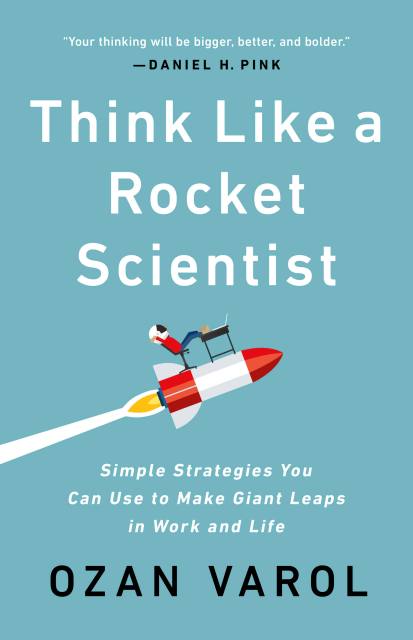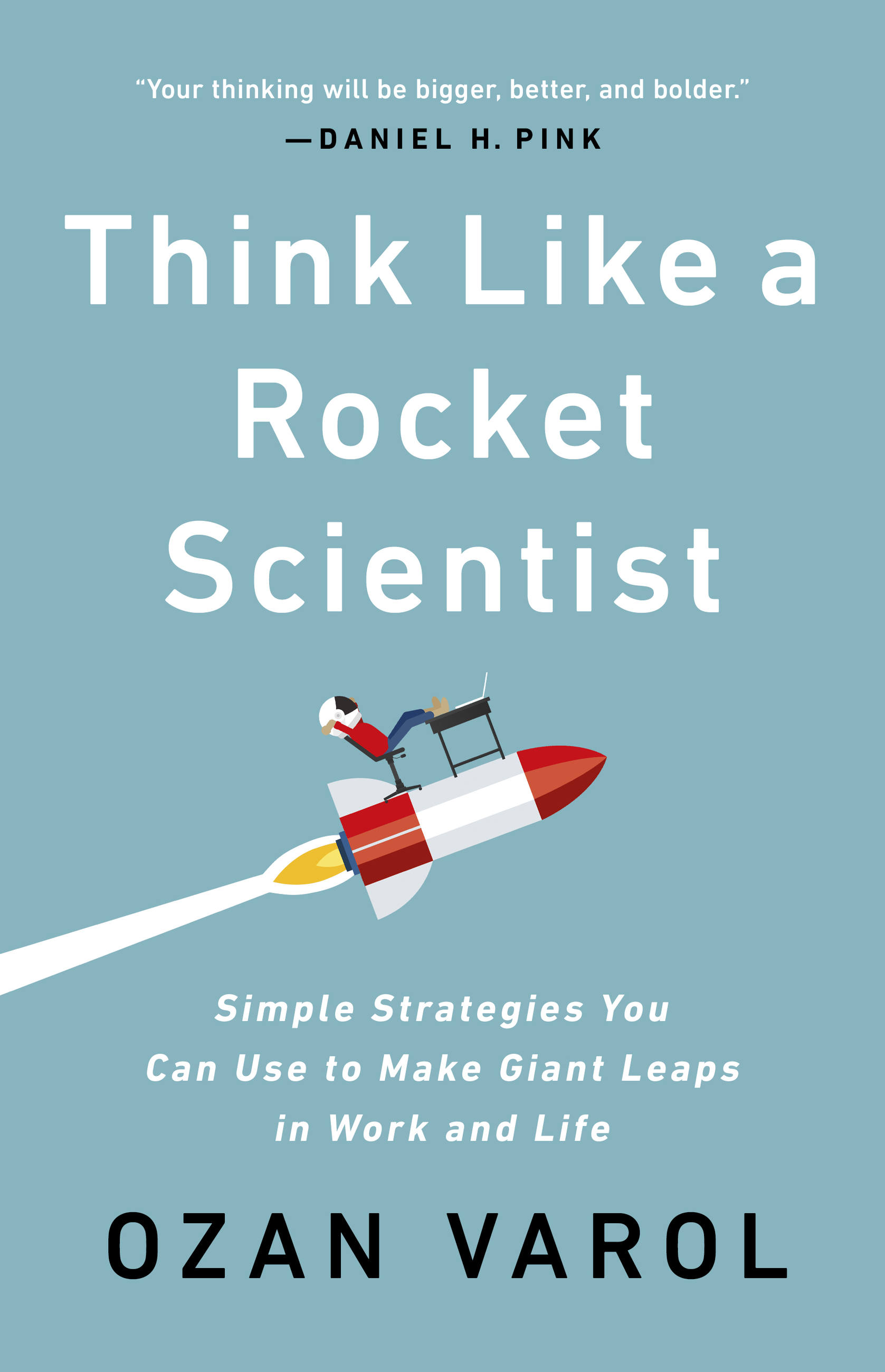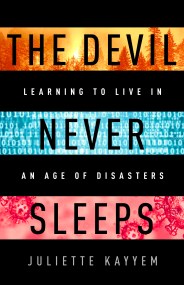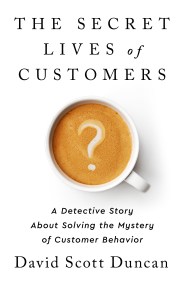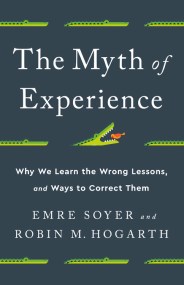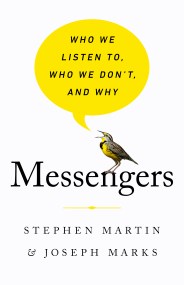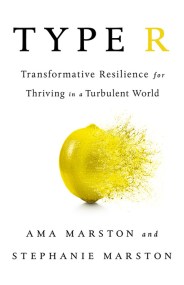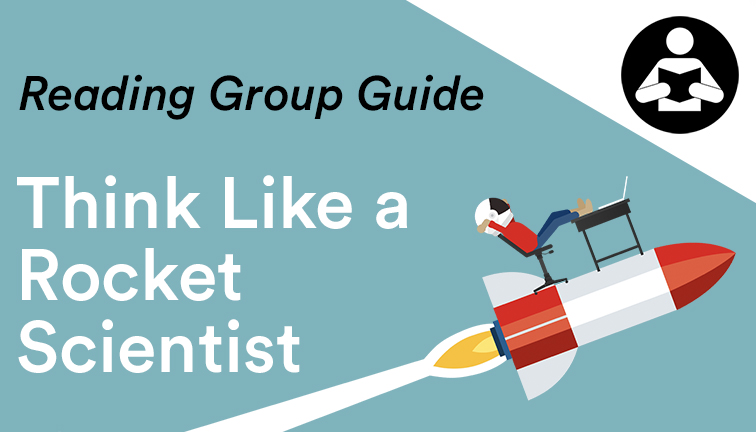Promotion
Use code MOM24 for 20% off site wide + free shipping over $45
Think Like a Rocket Scientist
Simple Strategies You Can Use to Make Giant Leaps in Work and Life
Contributors
By Ozan Varol
Formats and Prices
Price
$18.99Price
$23.99 CADFormat
Format:
- Trade Paperback $18.99 $23.99 CAD
- ebook $12.99 $16.99 CAD
- Hardcover $28.00 $35.00 CAD
- Audiobook Download (Unabridged) $27.99
- Trade Paperback $18.99
This item is a preorder. Your payment method will be charged immediately, and the product is expected to ship on or around September 14, 2021. This date is subject to change due to shipping delays beyond our control.
Also available from:
* One of Inc.com’s “6 Books You Need to Read in 2020 (According to Bill Gates, Satya Nadella, and Adam Grant)”
* Adam Grant’s # 1 pick of his top 20 books of 2020
* One of 6 Groundbreaking Books of Spring 2020 (according to Malcolm Gladwell, Susan Cain, Dan Pink, and Adam Grant).
Rocket science is often celebrated as the ultimate triumph of technology. But it’s not. Rather, it’s the apex of a certain thought process — a way to imagine the unimaginable and solve the unsolvable. It’s the same thought process that enabled Neil Armstrong to take his giant leap for mankind, that allows spacecraft to travel millions of miles through outer space and land on a precise spot, and that brings us closer to colonizing other planets.
Fortunately, you don’t have to be a rocket scientist to think like one.
In this accessible and practical book, Ozan Varol reveals nine simple strategies from rocket science that you can use to make your own giant leaps in work and life — whether it’s landing your dream job, accelerating your business, learning a new skill, or creating the next breakthrough product. Today, thinking like a rocket scientist is a necessity. We all encounter complex and unfamiliar problems in our lives. Those who can tackle these problems — without clear guidelines and with the clock ticking — enjoy an extraordinary advantage.
Think Like a Rocket Scientist will inspire you to take your own moonshot and enable you to achieve liftoff.
Genre:
-
"Smart and witty, Varol's masterful analysis explains complicated scientific principles and connects them to ordinary life for a mainstream audience."Publishers Weekly
-
"Varol's polymathic background--rocket scientist, law professor, public speaker--makes him an engaging guide for this book, which cannily blends memoir, pop science, and self-help manual...A charming and insightful airplane read on innovation."Kirkus Reviews
-
"The scientific method of observing, developing a hypothesis, testing it and revising as needed has survived centuries for a reason: It works. And, as bona fide rocket scientist Ozan Varol shows, that approach--plus boundless curiosity--is handy whether you're designing a Mars lander or figuring out what to have for dinner."Discover Magazine
-
"But reading this encouraging book is one small way to help counter a downward trend and enrich America's psyche. Today, America longs for people with this very can-do attitude. Varol's optimistic look at the past can become America's present and future."The Epoch Times
-
"Thinking like a rocket scientist is not rocket science! Packed with witty writing, insightful advice, and invigorating stories, this must-read book will change the way you see the world--and empower you to change the world itself."Susan Cain, New York Times-bestselling author of Quiet
-
"When the stakes are high, the unknowns are threatening, and the problems seem insurmountable, you need a superhero -- which means you need Ozan Varol. He'll show you how to master the cognitive skills of a rocket scientist. And by the time you finish reading his endlessly fascinating book, your thinking will be bigger, better, and bolder."Daniel H. Pink, New York Times-bestselling author of When, Drive, and A Whole New Mind
-
"This is not just an engrossing read--it's bursting with practical insights. Ozan Varol's dazzling debut might change how you approach problems. Houston, this book has solutions."Adam Grant, New York Times-bestselling author of Originals and Give and Take, and host of the TED podcast WorkLife
-
"You're smarter than you think. Ozan Varol makes a compelling case for each of us to level up and to contribute at a level we've talked ourselves out of."Seth Godin, New York Times-bestselling author of This Is Marketing
-
"I love Ozan Varol. He's a brilliant mind, a warm and kind heart, and the exact type of spirit we need putting resilient vibes into the world right now."Neil Pasricha, New York Times-bestselling author of Book of Awesome
-
"Ozan Varol is like Nassim Taleb meets Daniel Kahneman."Clara Shih, Board Member of Starbucks; CEO of Hearsay Social
-
"Ozan Varol is one of my favorite thinkers on thinking. If you liked Smartcuts or are a fan of Farnam Street, you'll LOVE Think Like A Rocket Scientist. The fun stories and clarity of writing makes this manual on thinking bigger and better a pleasure to read--and I dare say it'll change your mind."Shane Snow, Bestselling author of Smartcuts and Dream Teams
-
"If you looked up the word 'polymath' in the dictionary, you may see a picture of Ozan Varol."Nir Eyal, Bestselling author of Hooked and Indistractable
-
"In this new book, Ozan Varol provides a toolkit for making better decisions (and 'giant leaps'!) even in the midst of a turbulent environment. After reading it, you might be inspired to take your own moonshot."Chris Guillebeau, New York Times-bestselling author of The $100 Startup
-
"The rocket scientists I know are technical, of course. But they are also among the biggest dreamers the world has ever seen. Ozan Varol has written a fascinating, practical, and mind-expanding book about how we can all benefit from thinking like a rocket scientist. This book will make you look at the world with a different lens and will help you make your own seemingly crazy moonshot a reality."Julian Guthrie, New York Times-bestselling author of How to Make a Spaceship, The Billionaire and the Mechanic, and Alpha Girls
-
"A wonderful book--a sort of vade mecum of critical thinking."Barbara Oakley, co-creator of Learning How to Learn, the world's most popular online course
-
"Perfectly captures the spirit of being 'responsibly irresponsible,' an essential trait for moonshot takers the world over."Obi Felten, X, the moonshot factory (formerly known as Google X)
- On Sale
- Sep 14, 2021
- Page Count
- 368 pages
- Publisher
- PublicAffairs
- ISBN-13
- 9781541762602
Newsletter Signup
By clicking ‘Sign Up,’ I acknowledge that I have read and agree to Hachette Book Group’s Privacy Policy and Terms of Use
Praise
-
“Smart and witty, Varol’s masterful analysis explains complicated scientific principles and connects them to ordinary life for a mainstream audience.”Publishers Weekly
-
“Varol’s polymathic background–rocket scientist, law professor, public speaker–makes him an engaging guide for this book, which cannily blends memoir, pop science, and self-help manual…A charming and insightful airplane read on innovation.”Kirkus Reviews
-
“The scientific method of observing, developing a hypothesis, testing it and revising as needed has survived centuries for a reason: It works. And, as bona fide rocket scientist Ozan Varol shows, that approach–plus boundless curiosity–is handy whether you’re designing a Mars lander or figuring out what to have for dinner.”Discover Magazine
-
“But reading this encouraging book is one small way to help counter a downward trend and enrich America’s psyche. Today, America longs for people with this very can-do attitude. Varol’s optimistic look at the past can become America’s present and future.”The Epoch Times
-
“Thinking like a rocket scientist is not rocket science! Packed with witty writing, insightful advice, and invigorating stories, this must-read book will change the way you see the world–and empower you to change the world itself.”Susan Cain, New York Times-bestselling author of Quiet
-
“When the stakes are high, the unknowns are threatening, and the problems seem insurmountable, you need a superhero — which means you need Ozan Varol. He’ll show you how to master the cognitive skills of a rocket scientist. And by the time you finish reading his endlessly fascinating book, your thinking will be bigger, better, and bolder.”Daniel H. Pink, New York Times-bestselling author of When, Drive, and A Whole New Mind
-
“This is not just an engrossing read–it’s bursting with practical insights. Ozan Varol’s dazzling debut might change how you approach problems. Houston, this book has solutions.”Adam Grant, New York Times-bestselling author of Originals and Give and Take, and host of the TED podcast WorkLife
-
“You’re smarter than you think. Ozan Varol makes a compelling case for each of us to level up and to contribute at a level we’ve talked ourselves out of.”Seth Godin, New York Times-bestselling author of This Is Marketing
-
“I love Ozan Varol. He’s a brilliant mind, a warm and kind heart, and the exact type of spirit we need putting resilient vibes into the world right now.”Neil Pasricha, New York Times-bestselling author of Book of Awesome
-
“Ozan Varol is like Nassim Taleb meets Daniel Kahneman.”Clara Shih, Board Member of Starbucks; CEO of Hearsay Social
-
“Ozan Varol is one of my favorite thinkers on thinking. If you liked Smartcuts or are a fan of Farnam Street, you’ll LOVE Think Like A Rocket Scientist. The fun stories and clarity of writing makes this manual on thinking bigger and better a pleasure to read–and I dare say it’ll change your mind.”Shane Snow, Bestselling author of Smartcuts and Dream Teams
-
“If you looked up the word ‘polymath’ in the dictionary, you may see a picture of Ozan Varol.”Nir Eyal, Bestselling author of Hooked and Indistractable
-
“In this new book, Ozan Varol provides a toolkit for making better decisions (and ‘giant leaps’!) even in the midst of a turbulent environment. After reading it, you might be inspired to take your own moonshot.”Chris Guillebeau, New York Times-bestselling author of The $100 Startup
-
“The rocket scientists I know are technical, of course. But they are also among the biggest dreamers the world has ever seen. Ozan Varol has written a fascinating, practical, and mind-expanding book about how we can all benefit from thinking like a rocket scientist. This book will make you look at the world with a different lens and will help you make your own seemingly crazy moonshot a reality.”Julian Guthrie, New York Times-bestselling author of How to Make a Spaceship, The Billionaire and the Mechanic, and Alpha Girls
-
“A wonderful book–a sort of vade mecum of critical thinking.”Barbara Oakley, co-creator of Learning How to Learn, the world's most popular online course
-
“Perfectly captures the spirit of being ‘responsibly irresponsible,’ an essential trait for moonshot takers the world over.”Obi Felten, X, the moonshot factory (formerly known as Google X)
